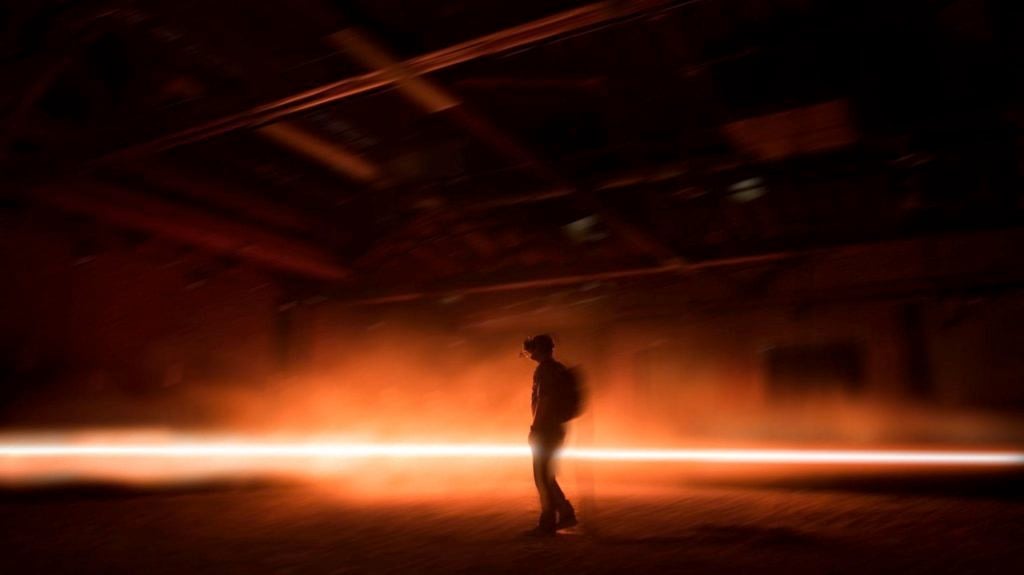Alejandro G. Iñárritu’s lavish agitprop virtual reality experience Carne y Arena (Virtually present, Physically invisible) is a stunning technical achievement that puts you in the middle of a confrontation between immigrants and border agents at the US-Mexico border. It is so stunning, in fact, that observers have hailed it as that rare thing: Art That Can Change The World.
I saw it at the Los Angeles County Museum of Art last year; now it has opened in Washington, DC, thanks to the Emerson Collective, a social justice organization founded by Laurene Powell Jobs. It is being teased as a transformational intervention in the political debate, offering politicians an experience that is “a far cry from the sheltered congressional chambers where [immigration] policies are made,” as Quartz put it.
Fans of Iñárritu’s opus are daring president Trump to experience it—the implication being, I suppose, that the man who started his presidential run by calling Mexican migrants rapists might be converted, through the magic of high-tech empathy, to rethink his entire worldview. Respectfully, I think this is probably not in the cards.
Carne y Arena’s lasting impact will probably be on the technical front—it won a special Oscar for its innovation, and is far and away the most successful artistic use of VR that I have experienced. I don’t doubt that VR can have some impact on changing minds. I do think, however, that Carne y Arena’s popularity is a chance to consider the rhetoric we use to describe how it changes minds, and under what conditions we might assume it changes them for the better.

Alejandro G. Iñárritu accepts a Special Award Oscar for cinematic innovation on November 11, 2017. Photo courtesy Robyn Beck/AFP/Getty Images.
Here is what you experience, if you manage to get a ticket to Carne y Arena. (In DC, the tickets are free—but you have to reserve a spot online.)
You enter alone into a cold waiting room that evokes the holding cells where migrants are kept. There, you deposit your belongings. A jarring alarm calls you into the main room, a darkened chamber with a sand-covered floor where assistants strap you to a heavy backpack and VR rig.
Then the real experience begins. You are plunged into the Sonoran Desert at sun-up, alone. A small cluster of migrants trudges towards you across the barren plain. But just as they join you and you begin to feel acclimated to the woozy virtual terrain, helicopters and immigration enforcement trucks thunder in from the distance. What ensues is a chaotic, punishing encounter where men and women and children are thrown to the earth, threatened with guns, and eventually hustled away.
Commentators have emphasized the you-are-there vividness of the Carne y Arena experience. There are, however, magical realist flourishes, as you would expect from the director of Amores Perros and Birdman.
At one point, the mirage-like apparition of a long table appears in the desert, upon which floats the specter of a sinking boat, a reference to the Mediterranean migrant crisis. Throughout the experience, whenever you accidentally pass through any of the virtual bodies, your VR goggles are filled with the momentary image of a floating, beating heart—a nice symbolic way to deal with such inevitable, reality-breaking collisions amid the frenzied action.
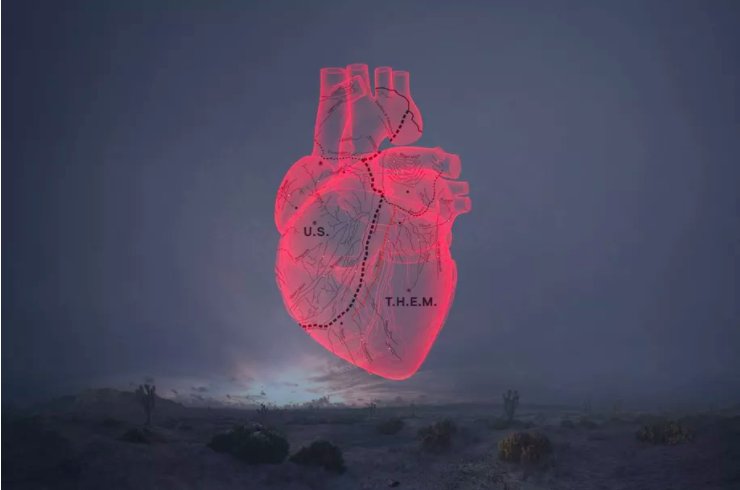
Promotional image for Carne y Arena (Virtually present, Physically invisible). Photo courtesy Carne y Arena.
Some critics have decried these breaks in Iñárritu’s virtual hyper-realism. I think it is smart to acknowledge the artifice of the whole thing via these artsy flourishes, if for no other reason than because failing to do so would only seem like the project was trying to hide its obviously rhetorical intentions.
Carne y Arena is, in Iñárritu’s description to IndieWire, “semi-fictionalized ethnography.” The encounter you experience is based on the testimony of real border-crossers and border agents. As many people have noted, by far the most emotionally powerful part of the whole experience is the installation’s epilogue, when, leaving virtual space, you exit into a chamber where you can gather your stuff again but also see Robert Wilson-esque photographic portraits of the real people behind the desert vignette. They stare out at you with mute, searching dignity, the screens on which they are projected overlaid with words that offer testimony about their lives and journeys.
These video portraits are lavishly produced, but the means they use—text and image, essentially the classic tools of photojournalism—are basic compared to the VR gimcrackery of Carne y Arena, for which George Lucas’s visual effects company Industrial Light and Magic actually had to invent new systems. And it’s worth noting that they add something that the ride-like attraction needs to be complete, and that is otherwise lacking: a way to view its subjects as more than merely pathos-eliciting avatars, but as humans with histories, flaws and all.
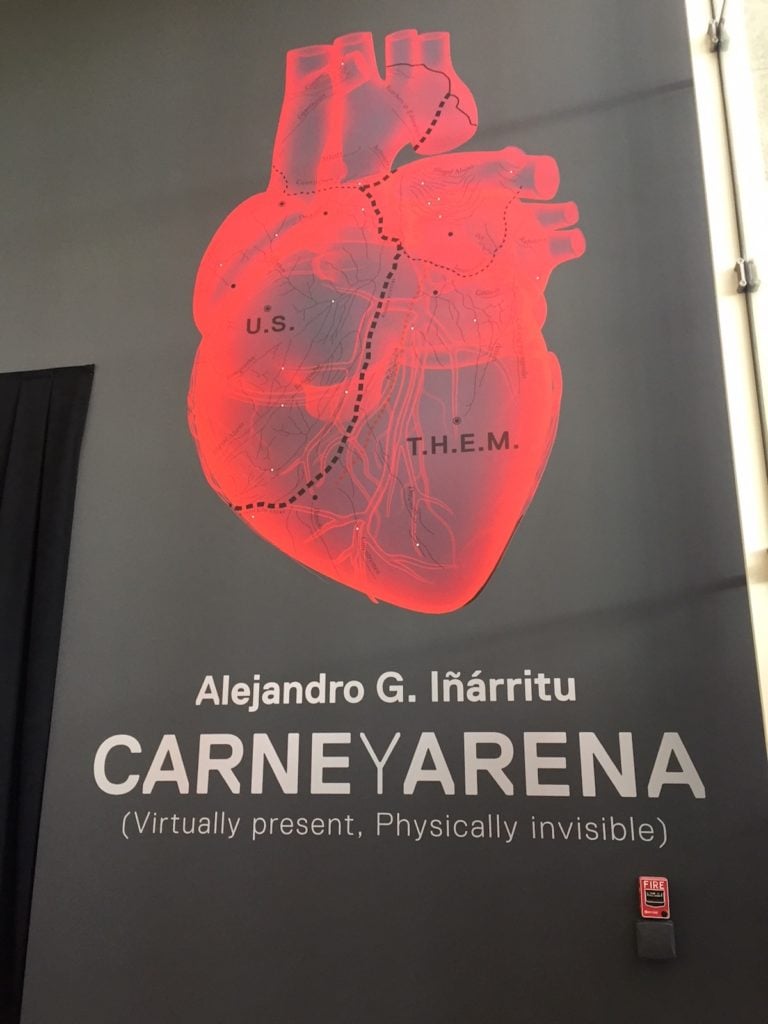
Outside the Carne y Arena space at LACMA (just before you give up your camera). Image courtesy Ben Davis.
Carne y Arena, so far, forms the acme of an emerging genre of VR art experience. Roughly speaking, I have four areas of concern about it:
1. The genre seems limited itself by its medium, which harbors a contradiction baked in right there in the words “virtual reality.”
VR serves as a way to experience various virtual things as if they were real, which then produces a difficulty when you are trying to make the user experience real things as real.
As vivid as the experience gets, you are also at all times keenly aware that the very same basic set-up lets you experience, say, being a Space Marine shooting demons in the head or scaling a 200-foot-tall amethyst octopus. This fact inherently produces a level of estrangement, and a barrier to the kinds of effects that VR can generate. (Carne y Arena makes its DC debut opposite Steven Spielberg’s Ready Player One, about a future defined by VR as a medium of pop-culture fantasy escapism.)
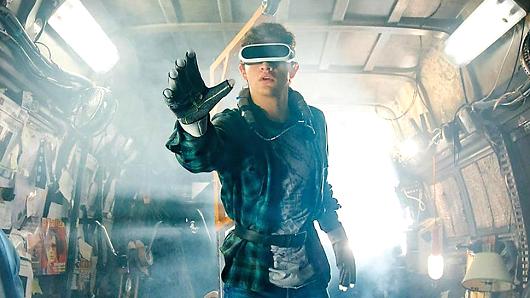
Still from Stephen Spielberg’s Ready Player One. Image courtesy Warner Brothers.
2. This genre is limited by its form: experimental art-house entertainment.
Just as the average movie length of under two hours is, ultimately, not an artistic but a business calculation determined by the need to have the maximum number of daily cineplex slots, Carne y Arena‘s six and a half-minute VR experience is not really the ideal time-frame to generate virtual understanding. It is merely an efficient duration to cycle a large number of potential viewers through an exclusive experience.
For a form of entertainment that claims to teach you about the urgent realities of another human being’s experience, six and a half minutes is not a particularly long amount of time to ask. In fact, a single pass through is not even enough to really process the richness contained in this short vignette all by itself—as Iñárritu has said.
“The second time is like sex,” the director told IndieWire, weirdly, of the need to relive Carne y Arena’s experience of immigrant terror more than once. “The first time there’s so much to assimilate, the second time you discover. There are many secrets.” But the dynamics of the presentation—the long waits, appointment-only system, and the fact that it can only be experienced by one person at a time—suggest that almost no one except perhaps VVIPs will go through twice.
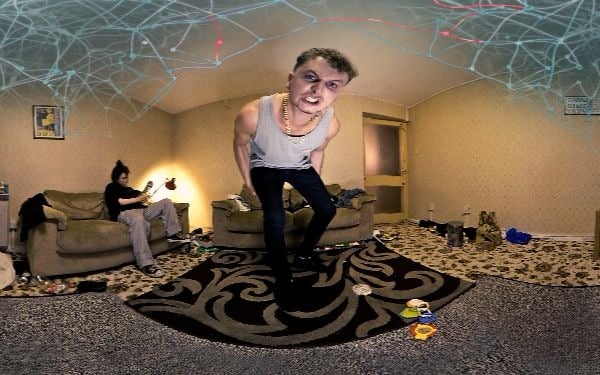
Still from a virtual reality film that shows parents what it’s like to be abused and neglected as a child. Courtesy The Cornerstone Partnership
3. This genre is limited by its intended effect: to brute-force empathetic identification via exposure to the migrant experience at its most brutal.
I don’t need to write an extended criticism of Carne y Arena on this level, because Rose Eveleth has already written such a good one, not about Iñárritu specifically, but about a host of other similar immersive experiences: projects that put you in the body of an abused child, or of a woman braving the gauntlet of anti-abortion protesters, or of a homeless person.
Reviewing the research on mediated empathy, Eveleth argues that it isn’t nearly the panacea that people want it to be—particularly the blunter “walk a mile in another’s shoes” experience that Iñárritu is quite literally promising.
There’s a distinction, she writes, between experiences that elicit “empathic concern” and those that set out to inflict “personal distress.” Essentially, being simply made to assume the pain of the other can easily backfire.
Traumatic experiences are by definition hard to think about. Thus, directly inflicting an audience with trauma has two potentially negative outcomes that actually decrease, rather than increase, empathetic identification. The first is that viewers categorize the subject matter as so horrible as to be overwhelming, therefore consciously or unconsciously causing them to avoid future encounters with it. The second is that viewers recode the experience in their memory as not so upsetting after all, which is a coping mechanism.
And I confess that in my memory of the chaotic events of Carne y Arena, I find myself dwelling much more on my own sense of living some kind of oddly muted out-of-body experience than of feeling deeply connected to the virtual victims. It’s possible that this is not because Iñárritu’s VR failed but because it succeeded too well.
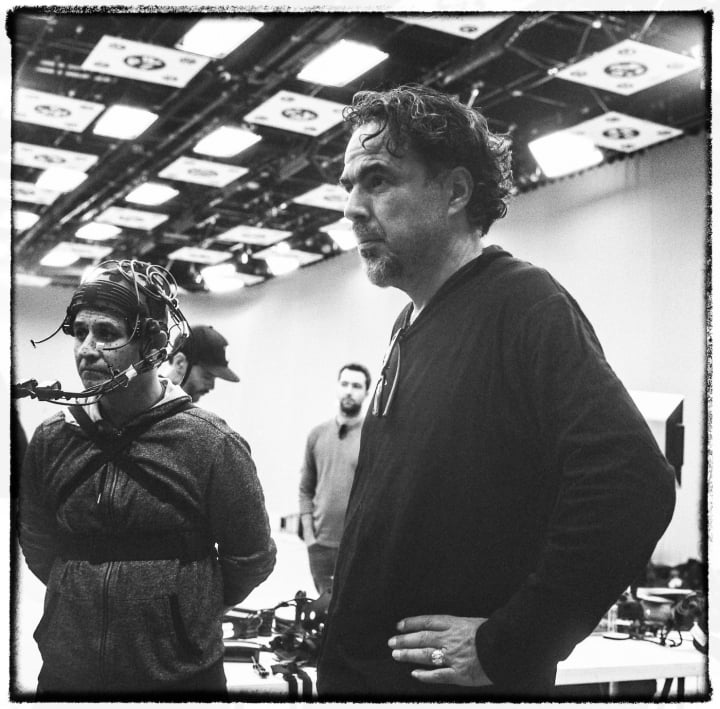
Alejandro G. Iñárritu directing a baker from El Salvador named Yoni, dressed in a motion-capture suit. Photo by Chachi Ramirez.
4. Finally, the genre is limited by the philosophy of experience on which it is implicitly built.
The notion that putting on VR goggles allows you to know the pain of another suggests that human experience is essentially defined by sensory input. But it’s not, really, is it? A toothache elicits very different emotions if you, say, have dental insurance or not.
The vividly tangible aspects of VR experience tend to obscure the importance of the presuppositions we bring to it—the ones that structure the way we experience actual reality in the first place. Downplaying those leads to a misunderstanding of what VR documentary might achieve, putting the stress on the importance of simply showing people things.
But I’d guess that if you don’t share the political sympathies that Carne y Arena quite plainly assumes on the part of its audience, then you are likely to question the aspects of the simulation that don’t fit your own beliefs, and more troublingly—as Eveleth argues—use the ones that do to reinforce preexisting stereotypes. “To the militant, identity is everything,” Susan Sontag writes in Regarding the Pain of Others. “And all photographs wait to be explained or falsified by their captions.”
Indeed, it is striking to me how much the whole rhetoric of VR’s world-changing, empathy-provoking potential for social redemption echoes early 20th century rhetoric about documentary photography that Sontag discussed in examples like Ernst Friedrich’s horrific photo essay War Against War! (1924). The latter was a bestseller in Weimar Germany, based on the notion that forcing the public to witness the true, awful toll of battle would produce compassion, which would, in turn, end war.
Such assumptions foundered exactly on the reality that the way we read images—or experiences, in the case of VR—is in no way guaranteed by their subject matter, however self-evidently traumatic it may seem to be. Here’s Sontag again:
In fact, there are many uses of the innumerable opportunities a modern life supplies for regarding—at a distance, through the medium of photography—other people’s pain. Photographs of an atrocity may give rise to opposing responses. A call for peace. A cry for revenge. Or simply the bemused awareness, continually restocked by photographic information, that terrible things happen.
What does that leave us with? Despite these many caveats, I wouldn’t dismiss Carne y Arena. On the whole, I think it is a pretty powerful work of art (particularly that last room). Its existence is positive.
I would change, however, the way it was framed. What I lament is that Carne y Arena puts so many eggs in the basket of creating empathy, since its power so clearly depends on a foundation of pre-existing sympathy. And what I wish—especially now that Iñárritu’s work is directly inserting itself into the political conversation—is that it was connected to more of a call to action than just daring Trump to see it.
Basically, I don’t think it will change many minds; what I do think is that it might ratify beliefs that people already have, and therefore inspire in those people a deeper conviction to act—but only if what it means to act is clearly defined.
No amount of technical wizardry is going to elicit sympathy from politicians who have built their careers on demonizing immigrants. As for the rest of us, we cannot fool ourselves into thinking that sympathy on its own takes us much beyond where we were to start with, before we put on the magical glasses.
Alejandro G. Iñárritu’s Carne y Arena (Virtually present, Physically invisible) is on view at 1611 Benning Road NE in Washington, DC, from 9 a.m. to 9 p.m. daily. It is also on view at the Los Angeles County Museum of Art at 5905 Wilshire Boulevard in Los Angeles.
